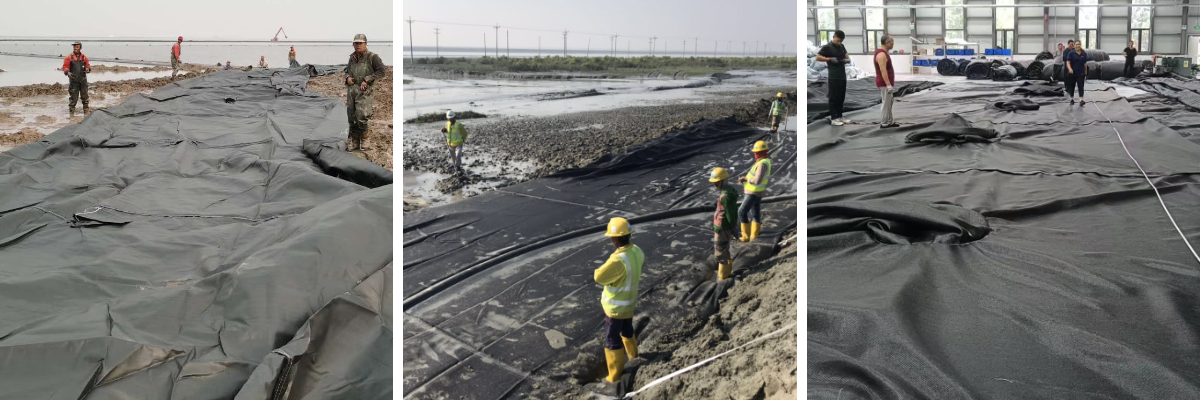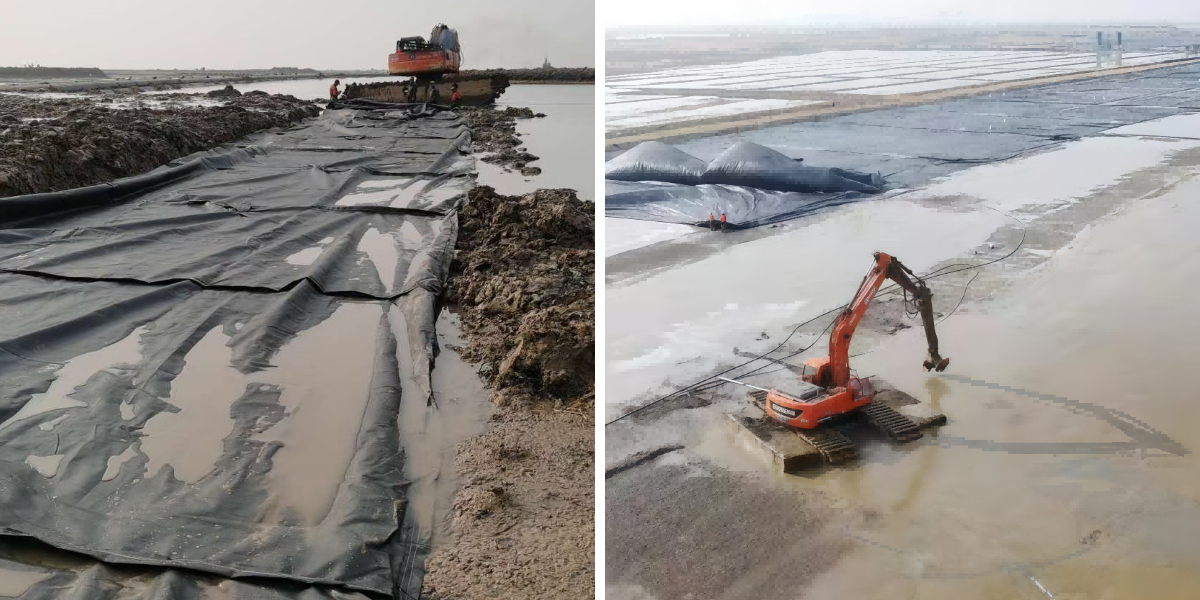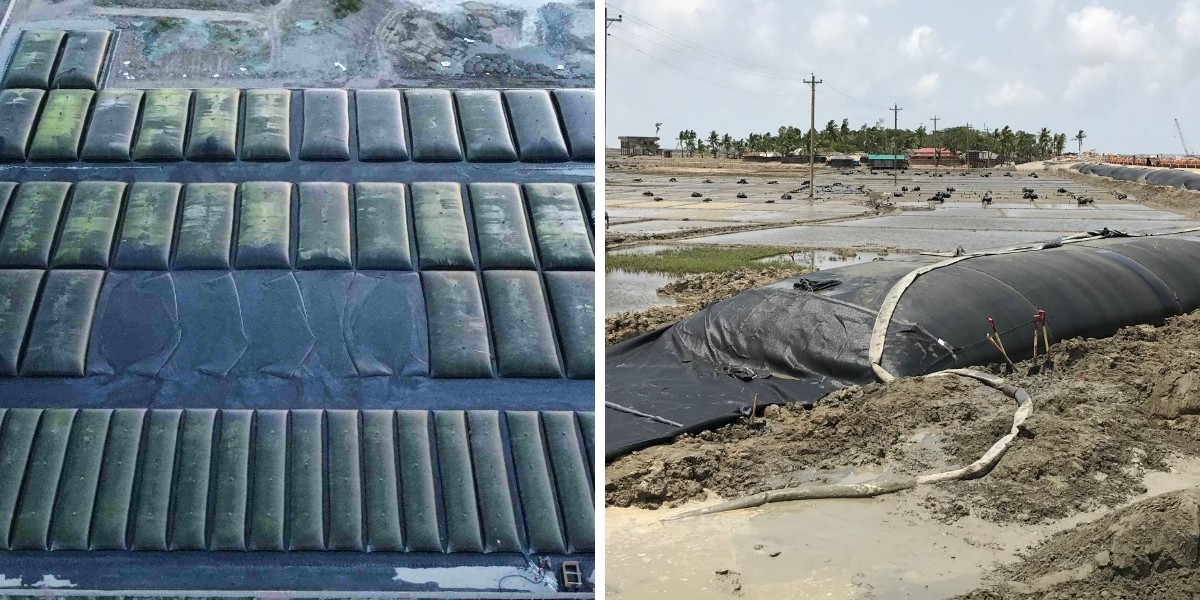Dewatering Bags for Industrial Wastewater: Compliance and Efficiency Standards
Industrial wastewater management is a quintessential precedence for amenities worldwide—failure to deal with and dewater wastewater accurate dangers environmental harm, regulatory penalties, and operational downtime. Dewatering baggage have emerged as a cost-effective, scalable answer for setting apart solids from industrial wastewater, however their overall performance relies upon on two non-negotiable factors: adherence to compliance requirements and capacity to meet effectivity benchmarks.
This information breaks down the key compliance requirements, effectivity metrics, and product concerns for dewatering luggage in industrial settings. We’ll spotlight quintessential phrases like geotube dewatering, Dredging and Dewatering Bags, and Flood Control Geotube to assist you navigate product selections and align your wastewater administration approach with each rules and operational goals.
Why Compliance and Efficiency Matter for Industrial Wastewater Dewatering
Before diving into standards, it’s fundamental to recognize why compliance and effectivity are inseparable for industrial dewatering. Industrial wastewater frequently includes heavy metals, chemicals, or hazardous solids—regulatory our bodies (like the EPA in the U.S. or EU’s ETS) mandate strict limits on how these contaminants are handled, stored, and disposed of. Non-compliance can end result in fines, facility shutdowns, or prison action.
Efficiency, meanwhile, without delay influences expenses and productivity. Slow or ineffective dewatering leads to backlogs of wastewater, delayed waste disposal, and greater labor/energy expenses. Dewatering bags—including specialised selections like geotube dewatering systems—are designed to stability compliance (by containing contaminants) and effectivity (by accelerating water removal), making them a cornerstone of contemporary industrial wastewater management.
Notably, even the most environment friendly dewatering answer is vain if it fails to meet compliance standards. For example, a Dredging and Dewatering Bags gadget that speeds up dewatering however leaks contaminants will nevertheless violate regulations. Similarly, a compliant however gradual device will avoid operations. The intention is to locate merchandise that excel at both.
Key Compliance Standards for Industrial Dewatering Bags
Regulatory necessities for dewatering baggage range by using location and industry, however three core requirements follow globally. These requirements dictate cloth safety, contaminant containment, and environmental impact—all of which need to be regarded when deciding on geotube dewatering or Dredging and Dewatering Bags systems.
1. Material Compliance: Food-Grade and Chemical Resistance
Industrial wastewater frequently exposes dewatering luggage to corrosive chemicals, oils, or solvents. Regulatory our bodies require luggage to be made from substances that withstand degradation and stop leaching of hazardous materials into the environment.
Material Certifications: Look for luggage made from FDA-approved polypropylene or polyester (for food/beverage enterprise wastewater) or chemically resistant fabric (for oil & fuel or manufacturing). Geotube dewatering systems, for example, use high-strength polypropylene that meets ASTM D4355 requirements for chemical resistance—ensuring they don’t damage down when uncovered to acids, alkalis, or hydrocarbons.
Contaminant Barrier Requirements: Bags need to have a tight sufficient weave or non-woven shape to comprise solids (e.g., heavy metal-laden sludge) whilst permitting water to drain. The EU’s REACH regulation, for instance, mandates that dewatering luggage stop the launch of components of very excessive problem (SVHCs) into soil or groundwater.
2. Performance Compliance: Solids Retention and Water Quality
Regulations additionally specify how correctly dewatering luggage ought to separate solids from wastewater. This is measured by way of two key metrics: solids retention effectivity (SRE) and effluent water quality.
Solids Retention Efficiency (SRE): Most areas require SRE of 90% or higher—meaning the bag ought to lure at least 90% of solids in the wastewater. Dredging and Dewatering Bags, which manage high-volume, high-solids wastewater (e.g., from mining or development dredging), regularly exceed this popular with SRE of 95%+ thanks to their multi-layered material design.
Effluent Water Quality: The water drained from dewatering luggage (effluent) ought to meet neighborhood discharge standards. For example, the U.S. Clean Water Act limits heavy steel concentrations in effluent to much less than 0.01 mg/L for lead or mercury. Geotube dewatering structures are engineered to filter even quality particles (down to 5 microns), making sure effluent meets these strict limits.
3. Environmental Compliance: Disposal and Sustainability
End-of-life disposal of dewatered solids and dewatering baggage themselves is any other compliance focus. Many areas now require sustainable practices, such as recyclability or biodegradability.
Recyclable Materials: High-quality geotube dewatering luggage are regularly recyclable, lowering landfill waste. For example, polypropylene luggage can be melted down and repurposed into new geotextile products.
Biodegradable Options: For industries like agriculture or environmental remediation, biodegradable dewatering luggage (made from plant-based fibers) meet requirements like the EU’s EN 13432 for compostability—ensuring they smash down naturally after use.
Solid Waste Disposal: Dewatered solids (often referred to as “cake”) have to be disposed of in accordance to nearby rules. If the solids are non-hazardous, they can also be reused (e.g., as fill fabric for construction). Dredging and Dewatering Bags produce dense, easy-to-handle cake that simplifies compliant disposal.
Efficiency Metrics to Evaluate Dewatering Bags
Compliance units the baseline—but effectivity determines whether or not a dewatering bag is sensible for industrial use. Below are the key effectivity metrics to prioritize, alongside with how geotube dewatering, Dredging and Dewatering Bags, and Flood Control Geotube systems function in opposition to them.
1. Dewatering Speed (Water Removal Rate)
Dewatering velocity is measured in liters per rectangular meter per hour (L/m²·h)—the quicker the rate, the faster wastewater is processed.
Industrial Benchmark: For most industrial applications, a minimal pace of 50 L/m²·h is ideal. Geotube dewatering structures excel here, with speeds of 80–120 L/m²·h thanks to their porous, high-flow fabric. This is crucial for services with giant wastewater volumes (e.g., a pulp and paper mill processing 10,000+ liters daily).
Dredging and Dewatering Bags: These specialised baggage deal with even greater volumes, with speeds up to one hundred fifty L/m²·h. Their giant dimension (often 10–20 meters long) and strengthened cloth enable them to manner dredged wastewater quickly—reducing downtime for dredging operations.
2. Solids Concentration in Dewatered Cake
The purpose of dewatering is to produce a dry, compact stable (cake) that’s effortless to transport and dispose of. The greater the solids awareness in the cake, the much less quantity desires to be hauled—cutting disposal costs.
Industry Standard: A solids awareness of 25–40% is standard for industrial dewatering. Geotube dewatering structures persistently reap 35–40% awareness with the aid of the usage of vacuum-assisted drainage, which squeezes extra water from the cake.
Flood Control Geotube: While in particular used for flood mitigation, these tubes additionally double as dewatering equipment for emergency wastewater spills. They can attain 30–35% solids concentration, making them a versatile choice for amenities in flood-prone areas.
3. Operational Efficiency: Installation and Maintenance
Efficiency isn’t simply about water removal—it additionally includes how convenient the luggage are to install, use, and maintain.
Installation Time: Dredging and Dewatering Bags are designed for speedy deployment—teams can set up a 10-meter bag in underneath an hour, in contrast to 3–4 hours for usual dewatering tanks. This is indispensable for time-sensitive initiatives (e.g., cleansing up a wastewater leak).
Maintenance Needs: High-quality dewatering baggage (like geotube dewatering systems) require minimal maintenance. Their long lasting cloth resists tearing or clogging, so they don’t want familiar inspections or repairs. In contrast, low-quality luggage may also enhance holes, main to leaks and high priced downtime.
How to Choose Compliant, Efficient Dewatering Bags for Your Industry
Selecting the proper dewatering bag requires matching product specs to your industry’s special wastewater traits and regulatory requirements. Below’s a breakdown for frequent industrial sectors, with a focal point on geotube dewatering, Dredging and Dewatering Bags, and Flood Control Geotube applications.
1. Mining and Mineral Processing
Wastewater Challenges: High solids content material (up to 30%), heavy metals (lead, zinc), and acidic pH.
Compliance Focus: EPA’s Resource Conservation and Recovery Act (RCRA) for hazardous waste containment.
Recommended Product: Dredging and Dewatering Bags (chemically resistant polypropylene, SRE 98%, effluent heavy steel stages <0.005 mg/L).
Why: These luggage take care of high-solids mining wastewater, lure heavy metals, and face up to acid corrosion—meeting RCRA standards. Their speedy dewatering velocity (120 L/m²·h) continues mining operations on schedule.
2. Food and Beverage Manufacturing
Wastewater Challenges: Organic solids (fruit pulp, dairy sludge), excessive BOD (biochemical oxygen demand), and food-safe fabric requirements.
Compliance Focus: FDA meals contact requirements (21 CFR Part 177) and nearby effluent BOD limits.
Recommended Product: Geotube dewatering structures (FDA-approved polyester, BOD discount 85%, solids attention 38%).
Why: Polyester is food-safe and resists natural fabric buildup; the system’s excessive SRE traps pulp/sludge, whilst effluent BOD tiers meet discharge standards.
3. Construction and Dredging
Wastewater Challenges: Dredged sediment, turbidity, and variable solids content.
Compliance Focus: Clean Water Act Section 404 (wetland protection) and nation dredging permits.
Recommended Product: Dredging and Dewatering Bags (large capacity, turbidity discount 92%, recyclable polypropylene).
Why: These baggage method giant volumes of dredged water, limit turbidity to shield wetlands, and their recyclable fabric aligns with sustainability mandates.
4. Oil and Gas
Wastewater Challenges: Hydrocarbons, saltwater, and poisonous chemical compounds (benzene, toluene).
Compliance Focus: EPA’s Oil Pollution Act (OPA) and kingdom underground injection manipulate (UIC) rules.
Recommended Product: Geotube dewatering structures (oil-resistant fabric, hydrocarbon retention 99%, saltwater drainage effectivity 95%).
Why: The oil-resistant cloth prevents hydrocarbon leaks, whilst the machine drains saltwater for secure disposal—meeting OPA and UIC standards.
Real-World Success: Compliant, Efficient Dewatering in Action
Case research spotlight how geotube dewatering, Dredging and Dewatering Bags, and Flood Control Geotube structures supply on each compliance and efficiency.
1. Mining Facility in Australia
Challenge: A gold mine wished to dewater 5,000 m³ of wastewater daily, containing lead and arsenic (hazardous beneath Australia’s National Environment Protection Measures).
Solution: Dredging and Dewatering Bags (polypropylene, SRE 99%, effluent lead stages <0.003 mg/L).
Results: Complied with NEPM standards; dewatering velocity decreased processing time by way of 50%, slicing labor expenses by using $20,000/month. Dewatered cake was once safely disposed of as non-hazardous waste.
2. Food Processing Plant in the U.S.
Challenge: A tomato processing plant confronted EPA fines for excessive BOD stages in effluent (exceeding 30 mg/L) and sluggish dewatering of tomato pulp.
Solution: Geotube dewatering machine (FDA-approved polyester, BOD discount 90%, solids attention 40%).
Results: Effluent BOD dropped to 25 mg/L (meeting EPA limits); dewatering velocity extended by means of 60%, putting off wastewater backlogs. Dewatered pulp used to be repurposed as animal feed.
3. Flood Response in Europe
Challenge: A manufacturing unit in Germany wanted to dewater 10,000 m³ of floodwater contaminated with industrial chemical substances after a storm—urgently, to keep away from environmental damage.
Solution: Flood Control Geotube (chemical-resistant fabric, dewatering pace ninety L/m²·h, SRE 95%).
Results: Complied with EU environmental emergency regulations; dewatering achieved in three days (vs. 1 week with normal methods). Contaminated solids have been safely removed, and smooth water used to be discharged.
Common Mistakes to Avoid
To make sure your dewatering gadget is each compliant and efficient, steer clear of these errors:
Ignoring Material Compatibility: Using a popular bag for oil-contaminated wastewater (it will leak, violating OPA standards).
Underestimating Volume: Choosing small geotube dewatering luggage for high-volume wastewater (leads to generic bag modifications and inefficiency).
Skipping Certification Checks: Buying uncertified baggage (they can also fail compliance tests, risking fines).
Overlooking Maintenance: Neglecting to look at Dredging and Dewatering Bags for tears (leaks can lead to non-compliance and environmental harm).
Conclusion: Balance Compliance and Efficiency for Industrial Success
Dewatering baggage for industrial wastewater are extra than simply tools—they’re a bridge between regulatory compliance and operational efficiency. By prioritizing cloth certifications, overall performance standards, and effectivity metrics, and deciding on specialised selections like geotube dewatering, Dredging and Dewatering Bags, or Flood Control Geotube systems, you can meet regulatory necessities whilst decreasing fees and enhancing productivity.
Remember: The first-class dewatering answer isn’t simply compliant—it’s tailor-made to your industry’s wastewater challenges. Whether you’re processing mining sludge, meals waste, or floodwater, investing in a high-quality, standards-aligned dewatering bag will defend your facility from penalties, decrease environmental impact, and maintain operations going for walks smoothly.
Contact Us
Company Name: Shandong Chuangwei New Materials Co., LTD
Contact Person :Jaden Sylvan
Contact Number :+86 19305485668
WhatsApp:+86 19305485668
Enterprise Email: cggeosynthetics@gmail.com
Enterprise Address: Entrepreneurship Park, Dayue District, Tai 'an City,
Shandong Province











